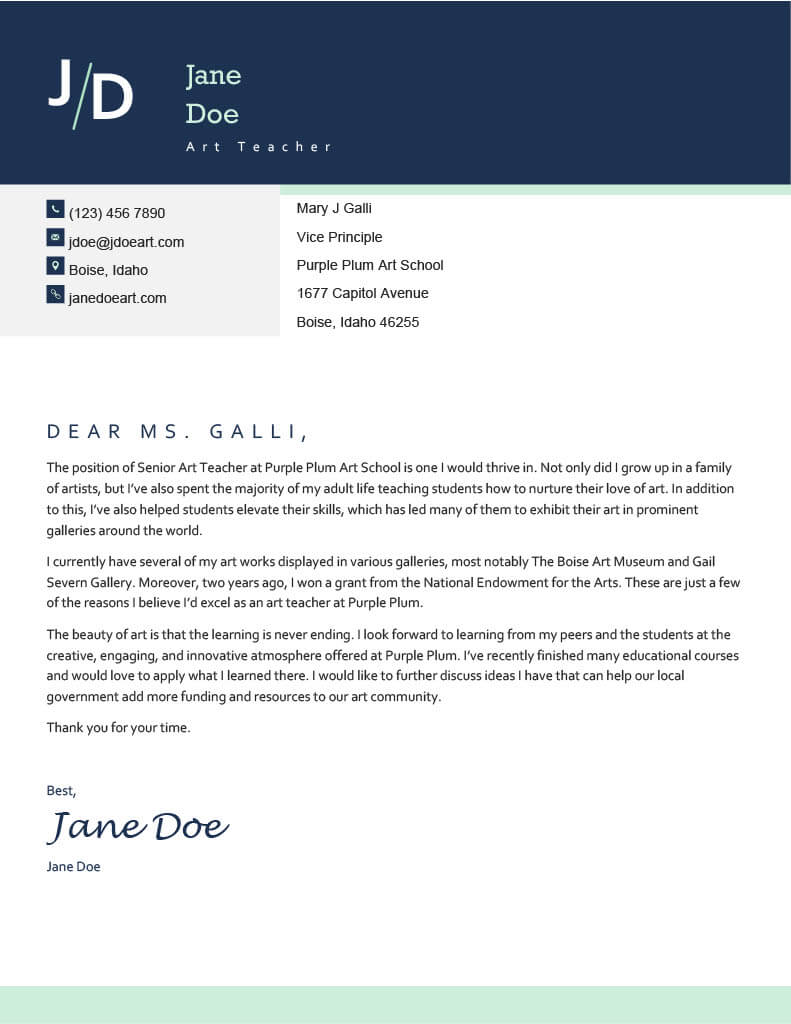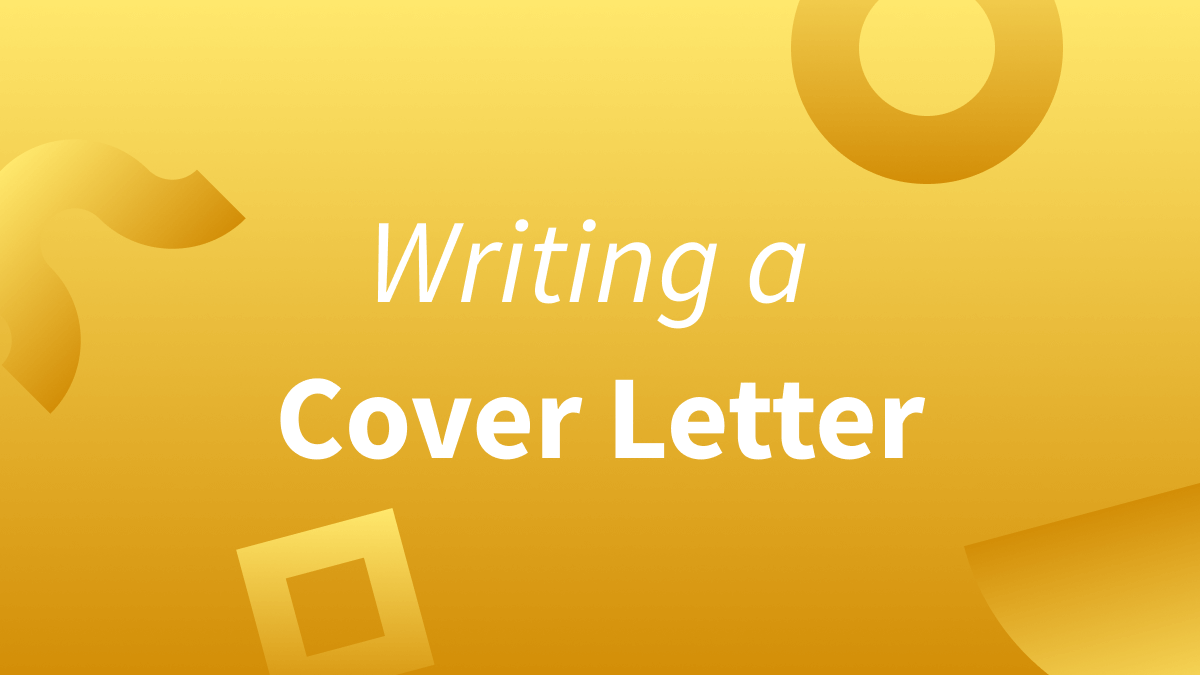Writing a Cover Letter
- A cover letter is a letter that gets sent alongside your resume. It’s an opportunity to show the prospective employer a more personal side of you and to showcase why you’re the best candidate for the job.
- The usual format of a cover letter is: header, salutation, introduction, body paragraph, closing paragraph, and closing.
- An effective cover letter summarizes your professional background while explaining why you’re a good fit for the position and stating what you can add to the company.
What Is a Cover Letter?
If you’ve ever written a resume, you know quite well how monotonous and repetitive they can be. They simply list your professional background and experience, with no room to demonstrate other important aspects of yourself.
That’s where cover letters come in— letters that accompany your job application and resume. Companies request these letters to give you an opportunity to more thoroughly explain things about yourself that your resume couldn’t.
Often, a cover letter is the deciding factor in whether your resume even gets considered. That’s why knowing how to write a good cover letter is critical. Below, we’ll go over what you should include in your cover letter, how to format it, and also provide an example of a well-written cover letter.

What Makes a Good Cover Letter?
To write a good cover letter, you should conduct research on the company and the position you’re applying for. This allows you to better explain why you’re the ideal candidate for the job.
A cover letter is where you can elaborate on your professional background, experience, and accomplishments that you listed on your resume. Cover letters also present the opportunity to write about things you couldn’t list on your resume. For example, if you’re applying for a position as an art teacher, you can explain that you come from a family of artists and have spent countless hours teaching your younger cousins how to nurture their love of art.
Remember, think of a cover letter as something that supplements your resume. Don’t just restate what you’ve already written in your resume.
Bonus Tip
It’s imperative that your cover letter be free of spelling, grammar, and punctuation mistakes. LanguageTool is a multilingual text editor that can detect and correct various types of errors, and can also ensure that your writing is formal and professional.
How To Format a Cover Letter
Nowadays, formatting a cover letter is easier than ever because of the endless number of templates that are available online. There are a few things you should keep in mind when writing your cover letter, though:
- Keep it brief. Your cover letter should be no longer than one page and include three to four paragraphs.
- Always use a professional font, like Arial or Helvetica (black and 10-12 points in size).
Format your cover letter to include:
1. Header
The format of the header sometimes varies depending on the template you use. However, regardless of the aesthetics, the cover letter should always include:
- Your full name
- Phone number
- Email Address
- Name of the hiring manager and professional title
- Name and address of the company you’re applying to
- Date
In some cases, it’s acceptable to add online social media profiles, like LinkedIn, for example. You can also add your website if it helps illustrate your work.
2. Salutation
After the header, greet the hiring manager by name. This information can be found on the company’s website, on their LinkedIn page, or in the job ad.
Dear Ms. Johansson,
However, if you cannot find it, then you can use any of the following:
Dear Hiring Manager,
Dear [Department] Team,
3. Introduction
In the introduction paragraph, make sure to mention the job title you are applying for. It’s also essential to grab the reader’s attention within the first one to two sentences. You can do this by stating your greatest accomplishments. The introduction of your cover letter, like the introduction of any other text, is vital.
4. Body Paragraph
Use the body paragraph to elaborate on your professional experience and also to explain why you’re a good fit for the position. Keep in mind that every position and scenario is different. Maybe the reason you’re a good fit for the company is the “wow factor” of your letter, and in that case, you’d want to include it in the introduction paragraph.
5. Closing Paragraph
Use the closing paragraph to demonstrate why you’re a good fit for the company and explain what you can add to it. Be descriptive. Don’t just say:
My passion and creativity can be beneficial to the company.
Instead, say something like:
I would love to be a part of the creative atmosphere offered by 123 Company. I have many projects in mind that can help in the company’s growth. Additionally, I look forward to learning from my peers as well as teaching them what I have learned in my many years in this line of business.
Wrap up the closing paragraph by thanking the hiring manager for their time.
6. Cover Letter Closing and Signature
Finish your letter by using any of the following formal closings, then type your name, and if possible, include a signature.
Best,
Regards,
Thank you,
What Does an Effective Cover Letter Look Like?
Here’s an example of a well-written cover letter:

What’s the Best Way To Write a Cover Letter?
Now that you’re equipped with the knowledge needed to write an effective cover letter, all you have to do now is, well, write! The best way to write a good cover letter is to look for jobs you’re passionate about and would thrive in, and to be honest with your writing. The genuine desire to work for a specific should be evident in your letter. Good luck!

